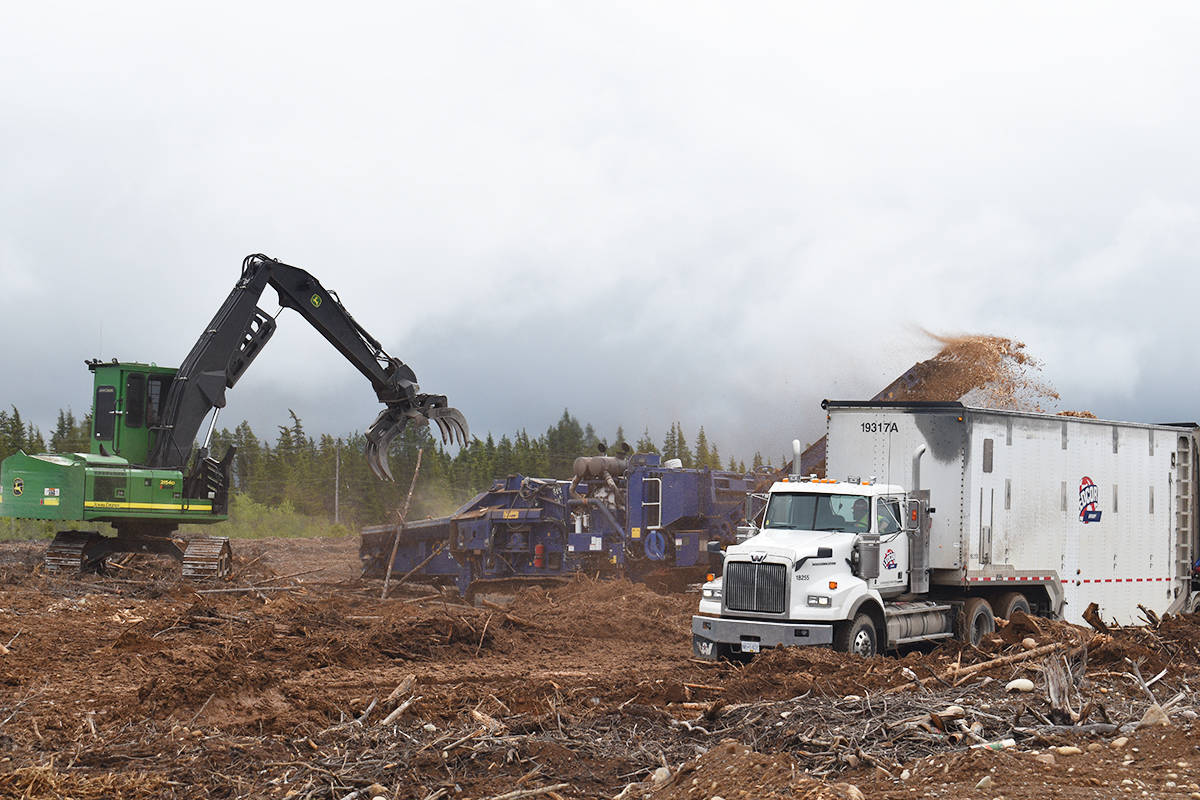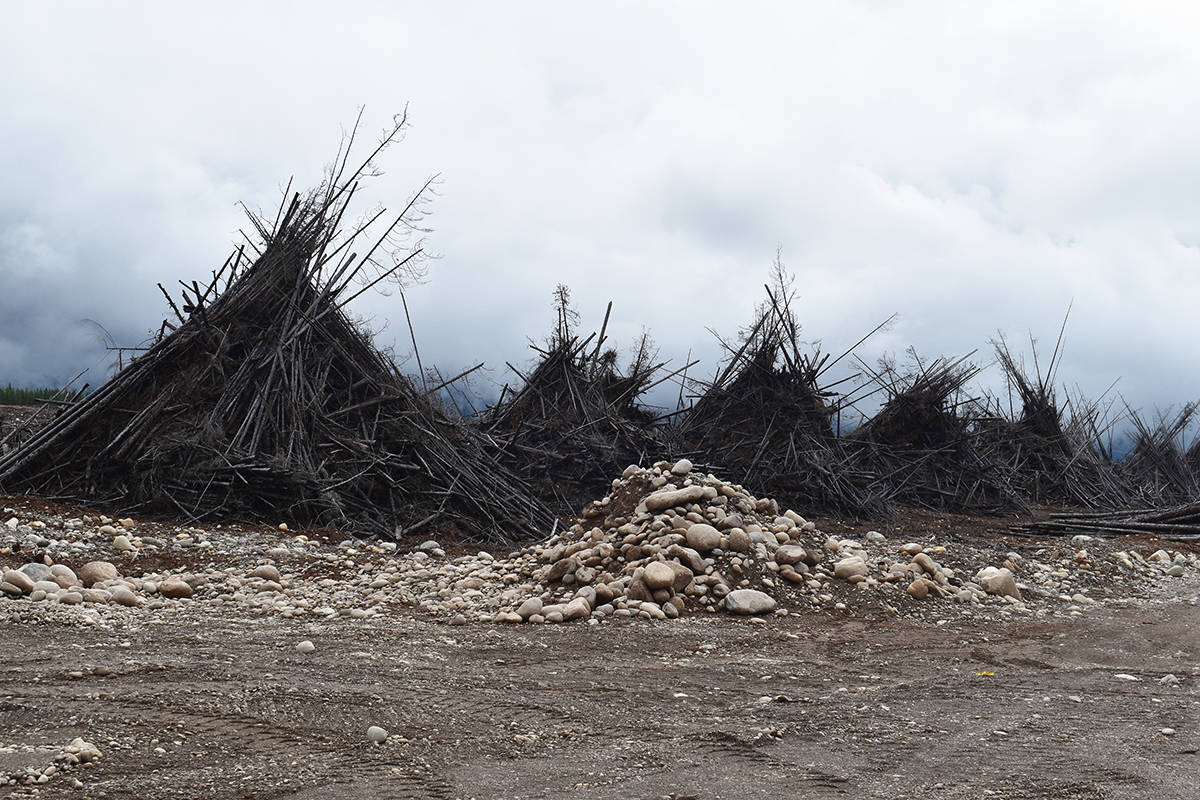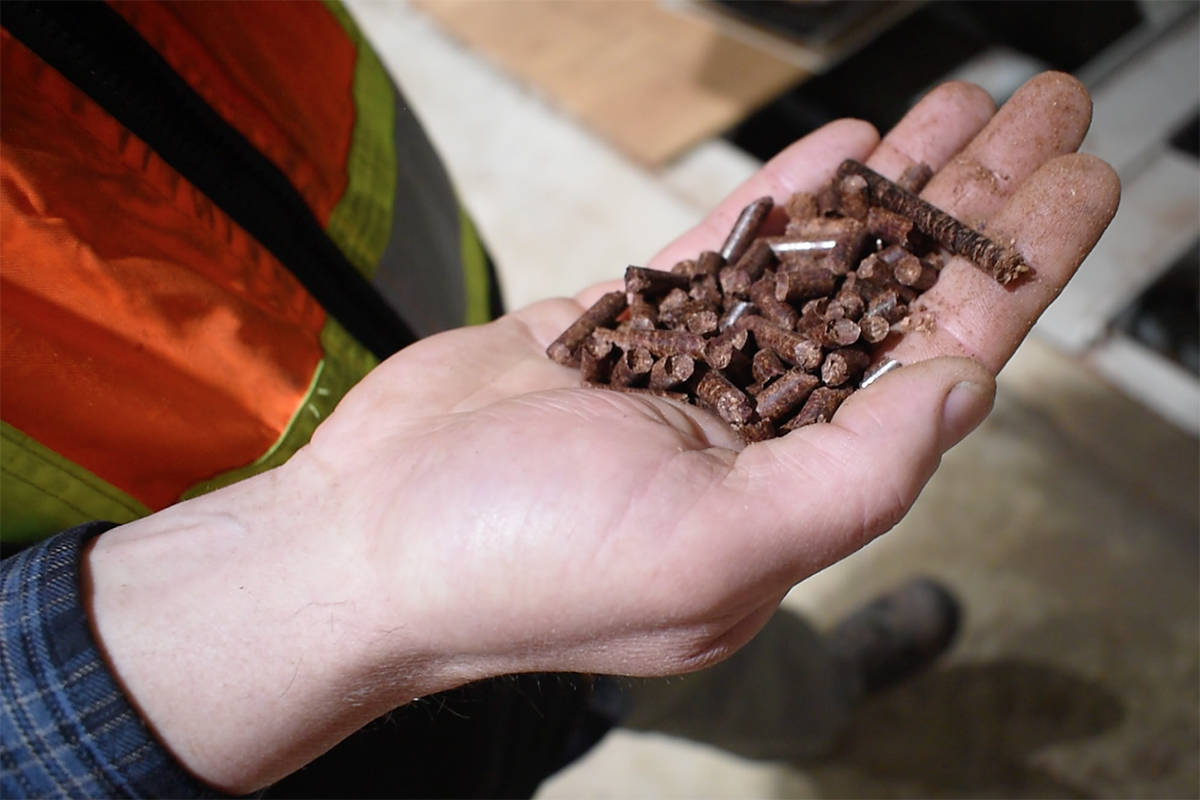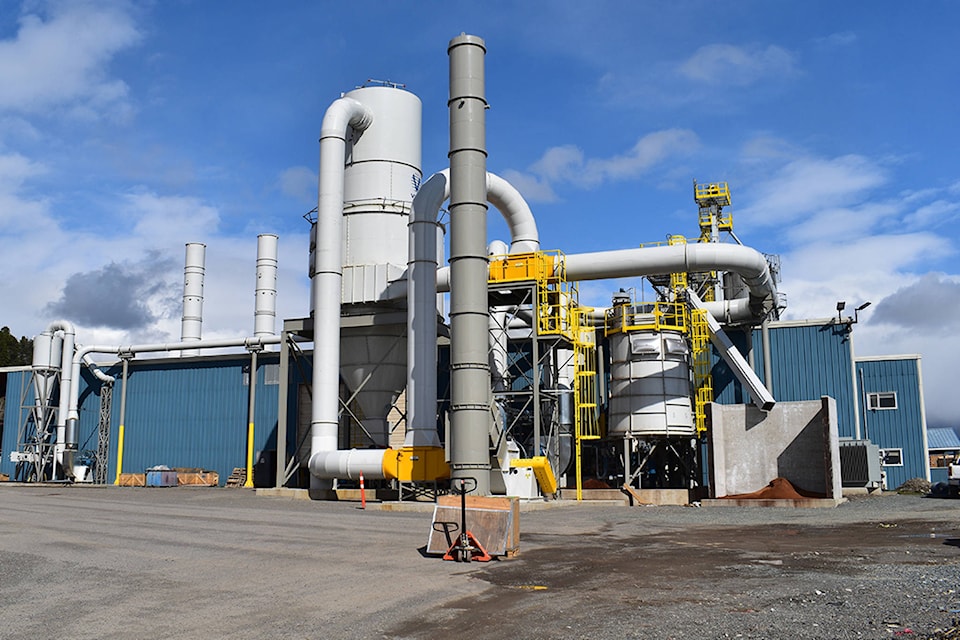Terrace’s new pellet plant is attracting international attention as the transition continues from fossil fuel dependence to more sustainable energy sources.
Skeena BioEnergy’s $20 million facility on the west side of Skeena Sawmills is aiming to establish itself as a green energy alternative, using the most modern machinery to minimize emissions and safety risks.
Recent regulations from the Ministry of Environment require biomass pellet plants to have the best technology available, meaning everything at the Skeena pellet plant is state-of-the-art.
“To the best of our knowledge, this is the cleanest pellet plant in the world. This level of safety we’ve managed to achieve here makes it one of the safest as well,” says plant operations manager Nathan Bond.
The plant’s eventual goal is to reach 24/7 operations, producing 75,000 tonnes of pellets annually — 10 tonnes per hour.
READ MORE: Pellets adding value resource at Skeena Sawmills
State-of-the-art equipment
Dust is a major concern for pellet plants as it can easily become a fire hazard, especially when it’s warm. To mitigate this, the plant has a negatively-pressurized air filtration system throughout the process.
“We’ve got a cyclone pulling air off the green hammer mill, a cyclone is pulling air from the dry hammer mill, and a cyclone is pulling air from the cooler. Air from all three cyclones is then fed into a giant one, called a cyclo-filter,” says Bond. “Essentially cyclones are cleaning almost all the material out of the air stream.”
Nothing goes to waste — anything that’s caught falls through the bottom of the cyclone and is put right back into production.
“We’re not putting any of the fine dust out into the atmosphere.”
Regulations from the Ministry of Environment require new pellet plants to adhere to emission standards, with dryer stacks releasing no more than 60 milligrams of particulate matter per cubic metre each quarter. Cooling exhaust is set at an annual limit of 115 milligrams per cubic metre.
But Skeena BioEnergy has set its targets much lower.
“[The dryer stacks] will be between half and two-thirds of [the limit], and the cycle filter will be between eight and nine [milligrams per cubic metre],” Bond says. “We have much cleaner air than most plants.”
READ MORE: Sawmill struggles as NDP boosts northwest log exports
Trial by fire
The plant’s sophisticated systems were put to the test earlier this year when the fire suppression system failed and a small fire arose.
As a result, the first emissions test was put on hold, stalling operations until new replacement parts were delivered and installed.
“We’re reviewing how the system works and reviewing the changes we have to make sure this never happens again,” says Skeena Sawmills vice-president Roger Keery.
The plant is still in its commissioning phase, and the fire was a learning experience for officials, Keery says. A camera inside of the dryer also captured the entire event so staff can understand exactly what happened.
“We have a pretty safe, reliable business here. So we’re going to use this as a way to make sure these systems are working and doing what we want,” Keery says. “I don’t want to see these events happen [but] every time that they do, you have to learn something and improve it.”
With the plant operating again in top form, Bond has high expectations of the flatbed dryer moving forward. Most other pellet plants use high-temperature drum dryers to cycle the material through. Though it may lack a bit in efficiency, low-temperature flatbed dryers are cleaner and safer.
“The temperatures that [drum dryers] use are in the 900-1400 degree range — it’s very hot. Quite often it causes a lot of smoke because you’re getting the resins out of the wood and they start to burn…you’re keeping it very hot within a closed system,” Bond says.
“That’s where people are familiar with seeing explosions of pellet plants.”
Gary Johnston, plant manager, says the plant was initially going to use another dryer system, but when he discovered the flatbed dryer, they delayed the plant’s completion by six months and added $1 million to the budget just to have it.
“It was better technology than what we were looking at and it just came out,” Johnston says. “[Skeena Sawmills] told us, ‘It’s got to be the cleanest plant in the world.’”
Safety-wise, any sparks or hot spots can be detected by sensors set up throughout the process. Single sparks can be extinguished using water, but if seven sparks are detected, the system shuts down completely. High-pressure bottles with baking soda automatically discharge when alerted to the slightest pressure changes to quell an explosion before it can start.
“They just cancel each other out. It’s all contained,” Johnston says.
READ MORE: Dryer fire damages Terrace pellet plant
New potential for Terrace
At full capacity, the pellet plant itself is expected to create an additional 22 to 25 jobs. But the relationship it has with Skeena Sawmills also creates more job opportunities, Johnston says.
“Now the sawmill will go into a second shift, which generates more residuals and provides a lot of employment in this town,” says Johnston.
The plant also acts as a support system for the sawmill by buying its residual material, providing additional income to keep the mill running should the volatile price of wood chips plummet.
Between 75 to 80 per cent of the wood fibre will come from waste from Skeena Sawmills, stockpiled at the Kitsumkalum landfill, with 20 to 25 per cent from outside suppliers with opportunities to increase depending on supply.
“Without this, that sawmill’s days would be numbered because there’s nowhere for the residuals to go,” Johnston says.
“They wouldn’t have made it to Christmas last year,” Bond adds.
The Skeena pellet plant will also receive two-thirds of the 30,000 cubic metres — 730 logging trucks full — of wood waste generated from clearing a portion of the Skeena Industrial Development Park lands. The remaining one-third will go to the Pinnacle Renewable Energy pellet plant in Burns Lake.
READ MORE: Skeena Bioenergy pellet plant enters long-term agreement with Pacific BioEnergy
Trevor Jobb, Westland resource consultant, says the residual wood would have been burned, or the majority given to Pinnacle, if Skeena BioEnergy hadn’t existed.
“The construction of a new pellet plant in Terrace provides options to supply biomass from the wood that wasn’t there before, rather than disposing of it through burning,” Jobb says.
Biomass, a low carbon fuel, has been gaining global popularity as an alternative to coal. Burning wood pellets produces 90 per cent fewer greenhouse gases than coal, and 50 per cent less than natural gas, according to the Wood Pellet Association of Canada.
Industry experts say both Japan and South Korea are expected to drive most of the demand, due to new policies and projects dedicated to wood pellet electrical consumption.
Skeena BioEnergy entered a long-term agreement with international supplier Pacific BioEnergy earlier this year to ship all its production to Japan via port facilities at Prince Rupert and Vancouver. Skeena BioEnergy is also looking at tapping into other wood pellet markets including Europe, China and Korea.
“I’ve been in the wood industry my whole life and it’s a passion for me, but this is a new vein,” Bond says.
brittany@terracestandard.com
Like us on Facebook and follow us on Twitter



